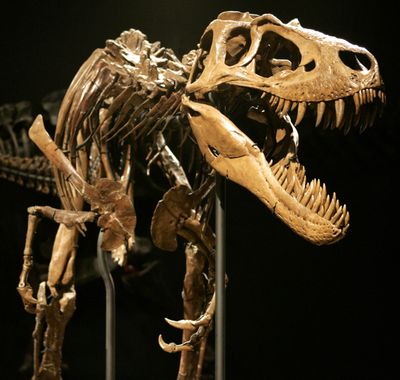Study reports T. rex ate T. rex
Paleontologists find tell-tale tooth marks on fossils

LOS ANGELES – Tyrannosaurus rex may have had a surprising predator to fear: Tyrannosaurus rex.
Paleontologists from the United States and Canada discovered T. rex bones with T. rex tooth-markings on them, according to a study published online Friday in the journal PLoS One.
Nicholas Longrich, the Yale University paleontologist who led the study, had been picking through dinosaur bones collections in museums, looking for signs of bites by small, scavenging mammals. Instead, he came across a T. rex bone with deep gouges that appeared to be left by a large, reptilian predator.
What creature roaming Hell Creek Formation (named after Hell Creek near Jordan, Mont.,) could have gnawed a T. rex bone? There was only one culprit in this area 65 million years ago, the scientists said: another T. rex.
“It’s not what I was looking for, but may as well run with it,” Longrich recalled thinking.
After searching through several different collections around the continent, Longrich and colleagues from Montana, Florida and Canada turned up four bones showing the distinctive tooth damage.
Telling as the tooth marks are, it’s unclear whether Tyrannosaurus rex killed one another or picked the meat off their already-dead brethren.
Scavenging seems a likely bet, Longrich said, since teeth marks thought to be from younger, smaller T. rex were also found on the bones.
But the predators also could have fought their peers for territory – and feasted on the fallen loser. “Pick the one you like better – I suspect both would have happened,” Longrich said.